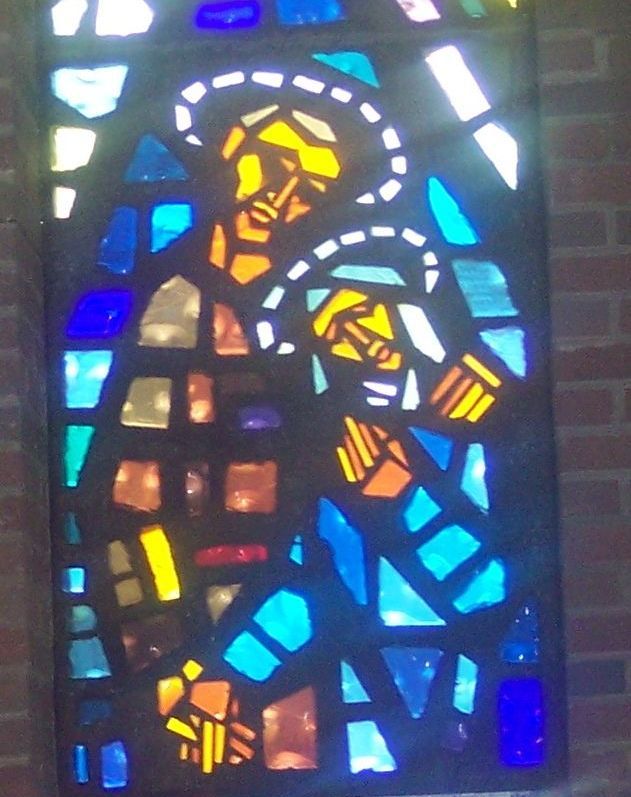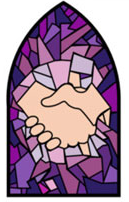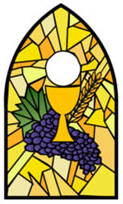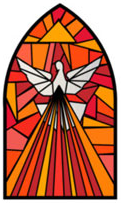About Our Parish
Founded in 1822 by Alonzo and James S. Brockway, the village of Brockwayville, which in 1934 was changed to Brockway, was incorporated on September 13, 1833. The earliest industry was lumbering, but by 1880 the bituminous coal industry had developed in Toby Valley which brought a significant growth in population in the area. Unexpectedly, however, the first Catholic Church was built in Brockport in 1888 known as St. Anastasius. It was dedicated on June 14, 1890 by Bishop Tobias Mullen and served the surrounding area until 1930 when a severe windstorm that struck the wooden church made it necessary to tear it down.
Meanwhile, the history of St. Tobias, Brockway really begins when Mass was celebrated in the home of Roger Welsh in 1896 for a small group of people. The Reverend B.J. Raycroft of St. Boniface Church, Kersey was the celebrant. As the congregation increased and outgrew the confines of the Welsh home, Mass was celebrated first in the Old Fellows Building followed by Bond and Cooper Hardware and the Grange Hall.
Explanation of our Church Windows
ST. TOBIAS CHURCH WINDOWS
Our Church was Dedicated and Blessed
on October 27, 1968
The character of the Faceted Glass used in the Nave and Chapel area of the church is like a transparent mosaic. They were created by the Pittsburgh Glass Studios and designed by H. Peter Brahm.

THE LEFT NAVE:
The three windows are dedicated to our Blessed Mother. The center window depicts Mary as the Queen of Heaven. The symbol above the figure is the Orb, the sign of Royalty. The left window shows Mary’s participation in the Redemption Plan. At the time of the Annunciation by the Angel Gabriel she accepts her mission, to be the Christ bearer. Below in the window is the Dove, the symbol of the Holy Spirit. The right window presents the scene where St. John takes our Mother home and cares for her. We identify ourselves with John, and so Mary becomes Our Mother. The bloom below is the Passion Flower, relating to Mary’s suffering.
THE RIGHT NAVE:
These three windows are dedicated to Christ Himself. In the center window, Christ is depicted as the Sacred Heart. A young man, with a receiving and blessing gesture, and the Flaming Heart on His chest. The symbol above refers to His monogram, the Greek letters CHI-Rho (P-X). The left window deals with Christ’s childhood. He was obedient to his parents and the customs of the time. The window shows Christ and His foster Father, Saint Joseph at work. Both wear an apron. Christ is holding a small plank and St. Joseph, an axe. The symbol below relates to St. Joseph, square and lily. The square as a tool for his trade, and, the lily for his purity which he kept until he entered the Heavenly Jerusalem. The right window shows the scene at Cana. Mary and Christ attended the Wedding Feast and therefore raise the dignity of Matrimony. His Mother pleads with Him to help the groom with his problem to care for his guests. The window depicts Christ performing the miracle with Mary at His side. The symbol below relates to the fact that water was changed into wine.


THE WEST NAVE-A GROUP OF FIVE WINDOWS:
The subject here is that of the patron Saint of the Parish, Saint Tobias. In the first window (left to right), we see Tobias the younger and Tobiah, his father. Tobias is holding a staff for he was called by his father to go on a trip to Media to collect monies due his father. He, Tobiah, could not go because he was old and blind. The symbol above is the Lamp of Knowledge-symbolizing the instructions and education from father to son. The following window depicts Tobias ready for the journey accompanied by a young man. This young man was chosen by his father as a traveling companion. Unknown to both of them, he was the Archangel Raphael. The symbol below is a gourd. This implement was used for transporting water in travel. In the next window, we see Tobias and Raphael. Tobias is holding a fish in a net. The fish attacked him while he was washing himself in the river. Raphael told him to remove the heart, gall, and liver from the fish, for it was good medicine, especially the gall. When they returned home after the long journey he used it on his father’s eyes. The symbol above shows an eye relating to the instructions by Raphael. The scripture tells further, after they came to Rages, a city in Medes, Tobias met the daughter of Raguel by the name of Sara, whom he fell in love with. He asked for her hand in marriage. Raphael then travels alone to the place to collect the money, and returns the day of the wedding to give Tobias the amount of money. The window shows Tobias and Sara at the marriage ceremony. The symbol below depicts the Interlocked Rings of Matrimony. In the last window of the series, we see Tobias returning home. Tobias cures his father’s eyes with the gall. In the background is Raphael. He is shown with wings in the window because upon their return he identifies himself as the Archangel.
THE CHAPEL:
The theme of these windows is The Love of God to His People. The first window (left to right) portrays God creating the universe and man. God is touching man’s hand to give life to His creature. God made His covenant with His people through the person of Abraham. The next window shows Abraham communicating with God. God is symbolized by the Bolt of Light. In the background we see a Ram caught in a briar. This refers to the test by God of Abraham’s obedience to offer his son Isaac. The extreme act of love by God is manifested in the fact that He sends His Son to be born of a woman among His creatures. The next window depicts the Birth of the Savior. Christ, the Son of God, has fulfilled the will of His Father. He lived as man among men, He suffered under men without love, He died but rose to the Father. He ascends toward Heaven out of the midst of His Disciples. The completion of the Redeption Plan becomes reality on the morning of Pentecost. Christ fulfills His Promise to send the Third Person of God, the Holy Spirit. The window depicts the group of Disciples and Mary. The symbol of the Holy Spirit, the dove, is above the tongues of fire over the persons present. The last window shows the Promise of Christ, that He will return to judge the living and the dead. The Son of God is seated holding a scale, the symbol of justice, and the scepter, the symbol of Majesty.








